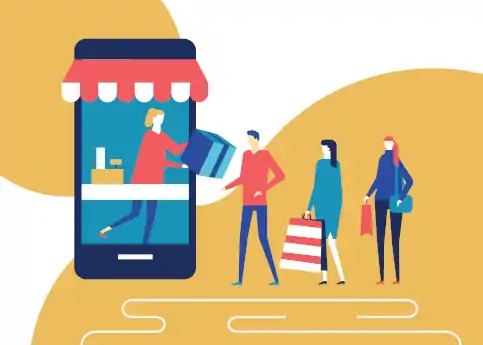Virtual queuing or virtual waiting room — aren’t they the same thing?
The main factor setting the waiting room systems apart is whether you’re queued in a physical location or online on a website or app away from any retail or service environment.
Online systems for online products
Our product, Queue-Fair, provides an online queuing system to protect websites and servers from web traffic surges and app traffic surges that overwhelm and overpower unprotected systems. In the years since we patented our solution it has come to be known as a virtual waiting room. A crashed site due to traffic surges can soon cost providers hundreds of thousands of pounds or dollars in losses from easily avoidable website downtime. A virtual waiting room or queuing system protects its vendors and visitors from all of that.
The types of websites protected by such a virtual waiting room experience include those selling tickets to premium events, popular eCommerce sites during seasonal peaks, and all kinds of branding, language, and international issues to boot. During heavy traffic the waiting room works by offloading visitors to a branded waiting room, away from the busy servers and site, and sending them back in first-come first-served order at a rate of access the protected servers and site can handle.

Virtual systems in physical locations
Virtual queuing creates and delivers systems so that shoppers, patients in clinics and hospital visitors, and those waiting for appointments have options for the best use of their time. Provided with gauged waiting times and waiting room queue positions, they know precisely how long they’re likely to be held up before access, often avoiding the physical waiting room altogether.
How are these waiting room systems better than traditional methods?
- Customers add themselves to the queue
- Prioritized services selections
- Estimated waiting times and queue positions
- Digital signage provides real-time information and next-step instructions
- Portable SMS notifications for app and online hosted systems
- Multilingual options
Combining physical queuing with a digital system, users are better informed throughout the waiting room process, while offered various alternatives to standing in line. This visitor’s waiting room experience offers them a perceived level of complete control, resulting in a preferred transaction.
Digital registration systems allow your staff to get on with more important and pressing matters in the present, as will digital signage systems that inform human visitors in the waiting room when it’s their turn and where to go next.
The benefits of virtual waiting room software during the Coronavirus pandemic
We’re more than aware of the impacts of social distancing and the extreme measures society has taken to ensure the best possible safety practices. The rules and regulations apply to all kinds of businesses and operations, each with their unique ranges of consumer types - not just patient satisfaction.
For hospitals, healthcare services and providers, physical waiting rooms have been stripped back to reduce proximity and number of patients. Many have chosen a replacement or support health systems using virtual waiting rooms to provide higher patient satisfaction and optimize patient flow with automated appointment reminders, allowing patients to get patient status updates while in the waiting room, digital registrations and check-ins. Where possible, systems utilizing 2-way video or audio consultations has meant that many physical visits are now easily avoided with a better patient experience.
Without a doubt, this waiting room technology has limited the spread of the virus, while protecting staff and patients from other illnesses and disease. It optimizes patient flow during periods of high demand, fends off unseen disruptions while providing further flexibility, safety, and security.
The lessons learnt from our current situation, and the speed that new technology was forced into action, will inform how practices are managed in future.





























